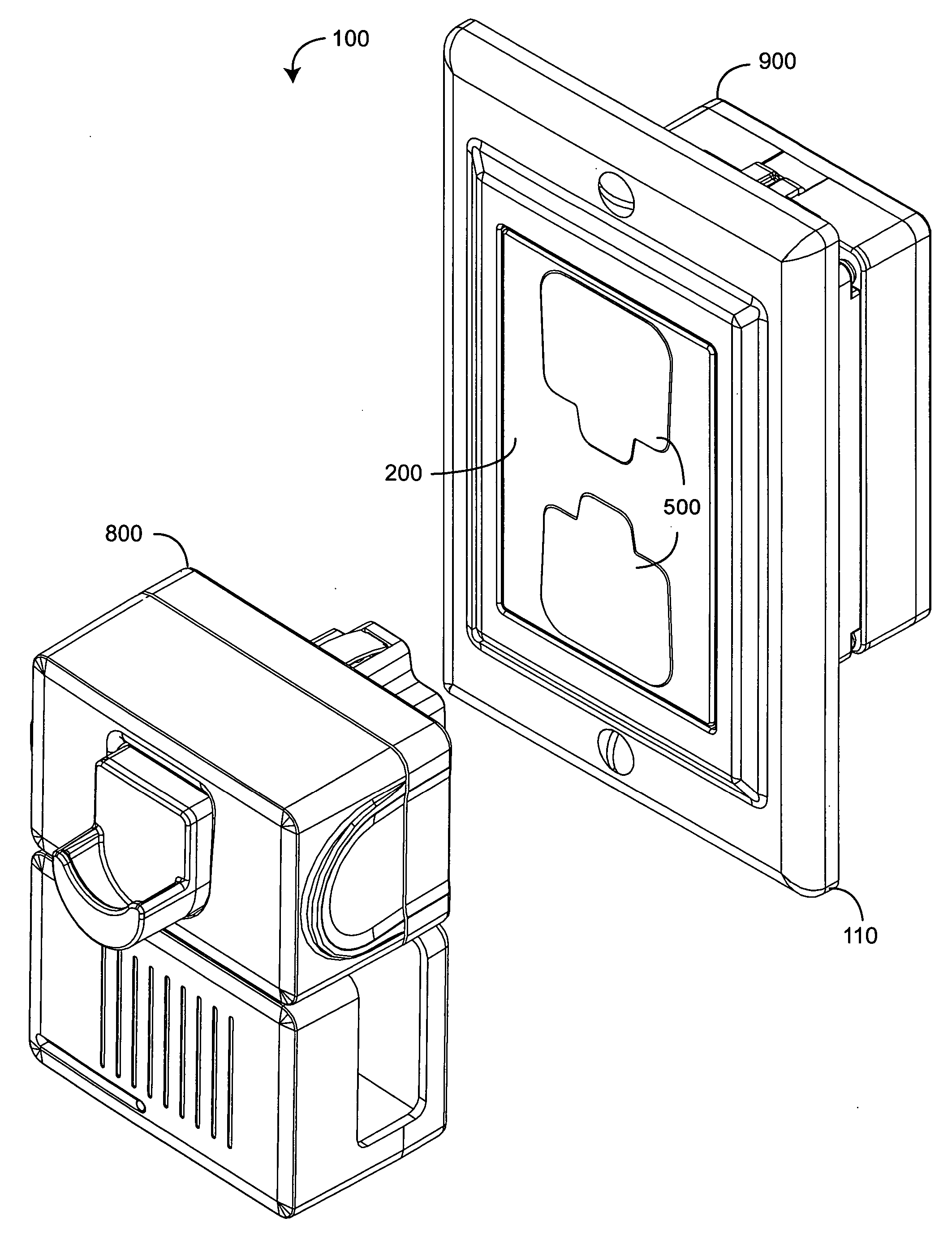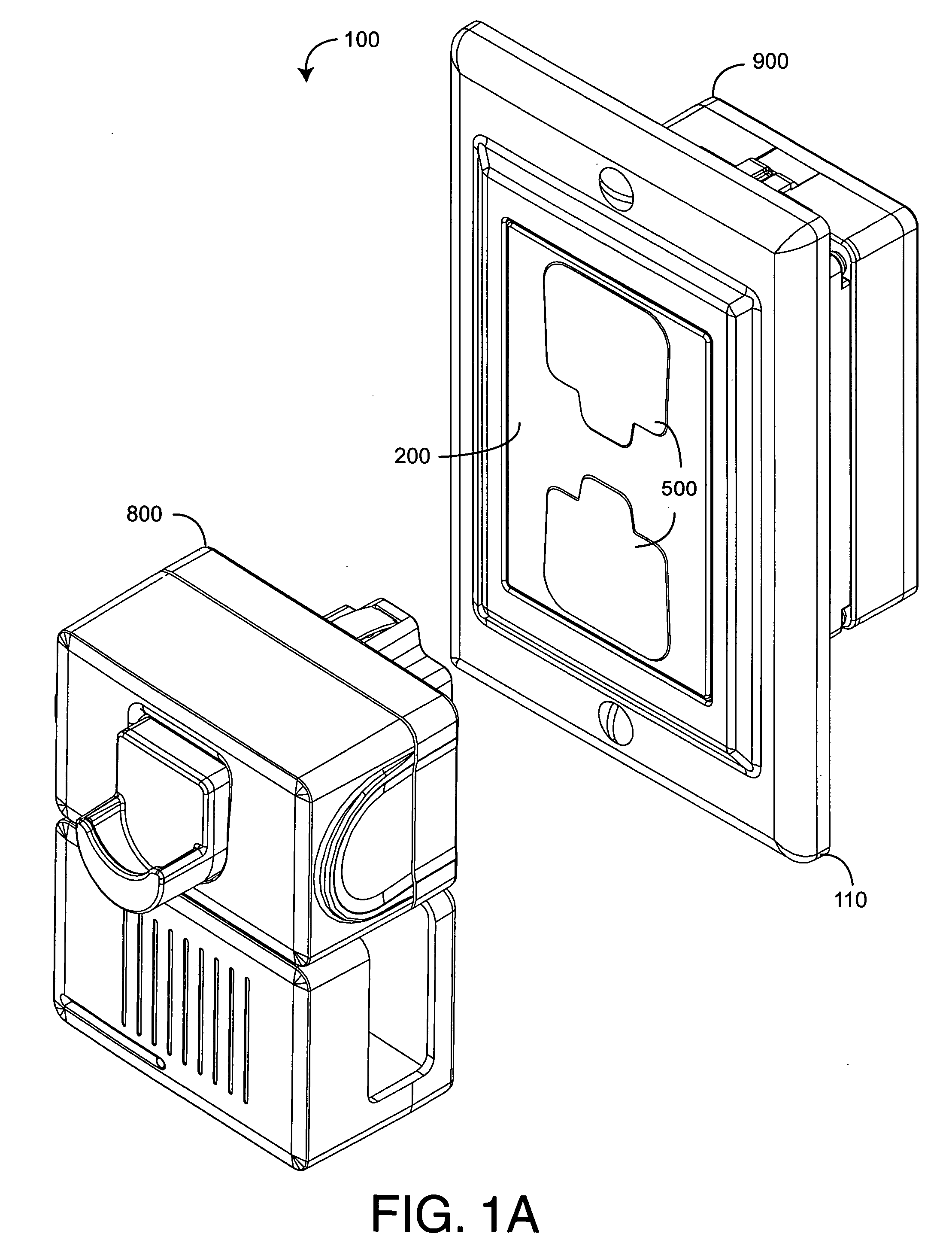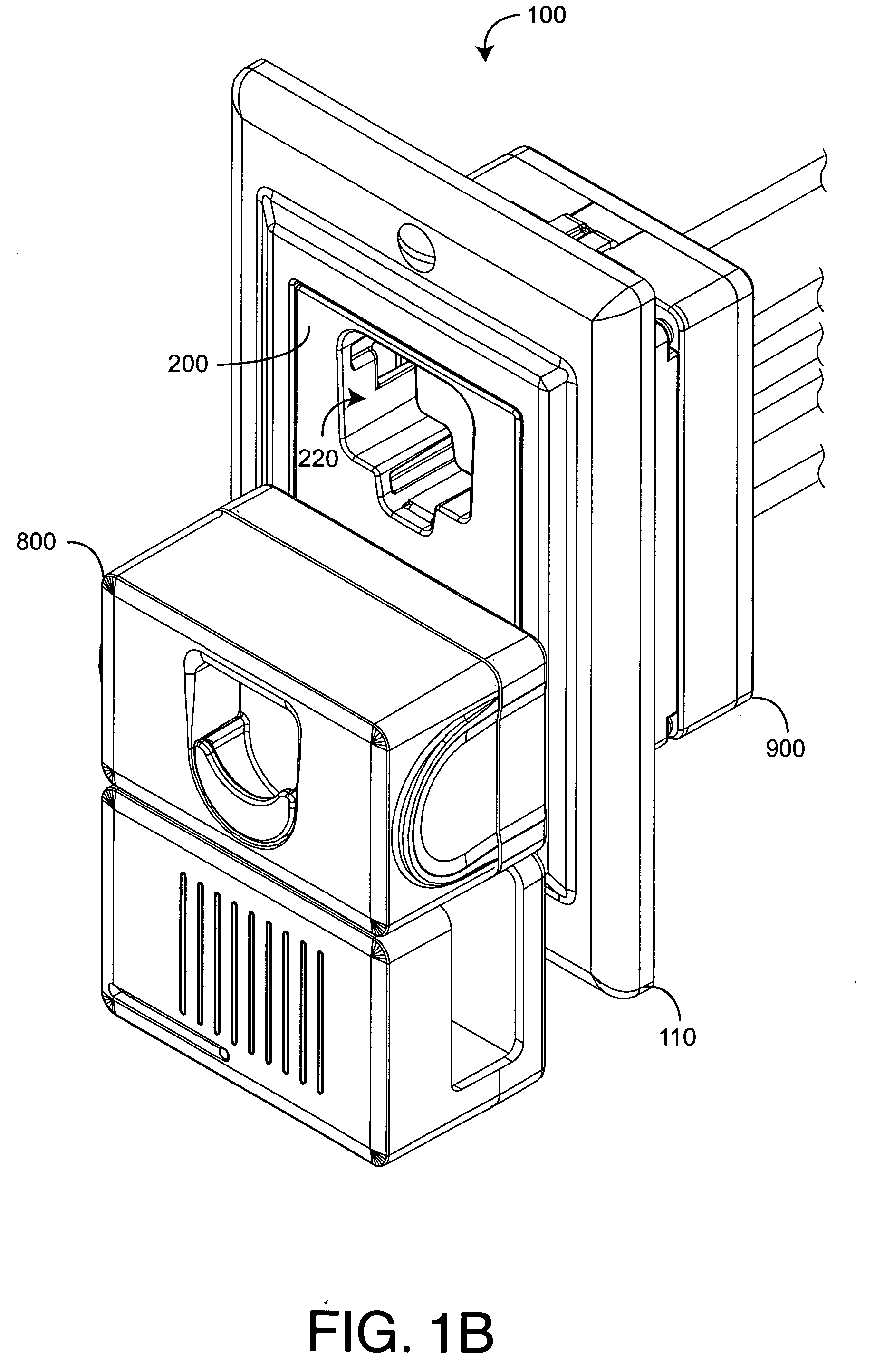Safety outlet module
a safety outlet and module technology, applied in the direction of insulated conductors, coupling device connections, cables, etc., can solve the problems of shock and fire hazards, standard electrical wiring repair, etc., to reduce exposure to electrical wiring, easy and safe replacement of outlet and switch modules, and enhanced safety
- Summary
- Abstract
- Description
- Claims
- Application Information
AI Technical Summary
Benefits of technology
Problems solved by technology
Method used
Image
Examples
Embodiment Construction
Overview
[0023] FIGS. 1A-D illustrate a safety power distribution system 100 having a safety outlet module 200, a corresponding locking plug 800 and wiring module 900. The safety outlet module 200 is configured to removably plug into the wiring module 900 and, thus, advantageously provides the safety and convenience features of a replaceable functional module, as described above. Further, the outlet module 200 has spring-loaded covers 500 that block small children from probing the outlet receptacles 220 with fingers and foreign objects, yet allows adults to insert the locking plug 800 without cover removal. Internally, outlet receptacles 220 have no exposed contacts, further reducing the potential for electrical shock. A face plate 110 provides aesthetic wall trim for the outlet module 200. The locking plug 800 is configured to compress the receptacles covers 500 when inserted into the outlet module 200. The locking plug 800 has retracting prongs 832 (FIGS. 8A-D) that extend within...
PUM
 Login to View More
Login to View More Abstract
Description
Claims
Application Information
 Login to View More
Login to View More - R&D
- Intellectual Property
- Life Sciences
- Materials
- Tech Scout
- Unparalleled Data Quality
- Higher Quality Content
- 60% Fewer Hallucinations
Browse by: Latest US Patents, China's latest patents, Technical Efficacy Thesaurus, Application Domain, Technology Topic, Popular Technical Reports.
© 2025 PatSnap. All rights reserved.Legal|Privacy policy|Modern Slavery Act Transparency Statement|Sitemap|About US| Contact US: help@patsnap.com



